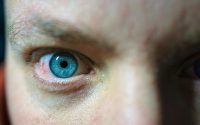Did You Know That the Moon Landing Was Fake?
A few months ago, I read an article that claimed that NASA had faked the moon landing. There are three main reasons why this is so: evidence, money, and the fact that NASA has a habit of covering up what they discover. While there are some good points to all of these reasons, the first reason is the biggest.
Evidence
There’s a lot of evidence that the moon landing was faked. For instance, did you know that you can’t wave an American flag on the Moon?
Some people think that the Apollo missions were a hoax and have been pointing out some of the more curious details in photographs. Other claims include the fact that there was no atmosphere on the Moon. This means that no dust would have reached the heights seen in footage from the Apollo films.
Astronauts also didn’t have the best cameras for photographing the lunar surface. Their short exposures and apertures didn’t pick up faint starlight.
The Moon’s surface doesn’t have an atmosphere, so the sun is the only source of light. But, some sunlight actually scatters into shadows.
Stanley Kubrick’s 2001: A Space Odyssey served as a research and development project
It’s been 50 years since Stanley Kubrick’s sci-fi masterpiece, 2001: A Space Odyssey, opened in theaters. Many science fiction fans are curious to learn more about this 1968 masterpiece. Luckily, there’s some good information to be found. Whether you’re looking for the origins of the film, or want to know more about how it was made, the answers are here to help!
The story of how Stanley Kubrick’s 2001: A Space Odyssey was made is intriguing. For one, the movie was actually a research project. During the making of the film, Kubrick worked with NASA. He hoped to use the film to explore humankind’s relationship to space and the evolution of the human race.
In fact, the film was inspired by Arthur C. Clarke’s short story “The Sentinel.” This story describes an expedition to the moon in search of an artifact that would prove to be the key to our evolution.
Deaths of Grissom, Ed White and Roger Chaffee were an accident and not murder
The deaths of astronauts Gus Grissom, Ed White and Roger Chaffee on the Apollo program were a tragic event. However, some conspiracy theorists believe that they were murdered and that NASA had no intention of sending men to the moon.
In the summer of 1967, the first three man spacecraft, the Apollo Command/Service Module, was set to be launched from the launch pad at Cape Kennedy Air Force Station. An electrical spark ignited pure oxygen inside the cabin, causing a fire that killed the three astronauts.
While NASA reassured Washington officials that it would continue to pursue its goal of landing a man on the moon, some lawmakers questioned the future of the space program. Their concern was that similar accidents might occur and lead to the end of the space program.
Money is a good thing
One of my favorite topics of discussion is NASA’s space shuttle program. Having a fleet of spaceships to shuttle astronauts around the solar system has been a boon to the taxpayers of yore. A slew of moon- and sun-class spaceships have been tasked with the mission to send humans to the moon and back. Despite a few bumps and bruises along the way, the project is still an exciting albeit highly competitive endeavor. The big prize has been a major part of the budget since the dawn of the moon, and the surviving stewards are still chugging away at the high-grade. To say the least, a little more effort could have been spent on a more balanced budget. Fortunately, the aforementioned stewards have made the best of it in recent memory, and have a few tricks up their sleeve.
NASA covered up what had been found
A number of groups have claimed that NASA covered up what had been found after the Moon landing. According to the groups, the Apollo program was a hoax. These claims have been put forward since the mid-1970s.
While these theories have not been proven, they are very popular. They are often based on photos that have been published by NASA. Those who believe in them point out the oddities in these pictures. Some photographs have “hot spots” that look like a large spotlight instead of the Sun.
Many of these oddities have been pointed out by experts in photography. However, the claim that the oddities in these photographs are inconsistent with the real images has been disputed.
Conspiracy theorists have used an image to prove that the Moon landing was fake. One photo is said to show the “physical landing site” for Apollo 12. This photo was taken by Surveyor 3 during its 1967-1968 stay on the Moon.



